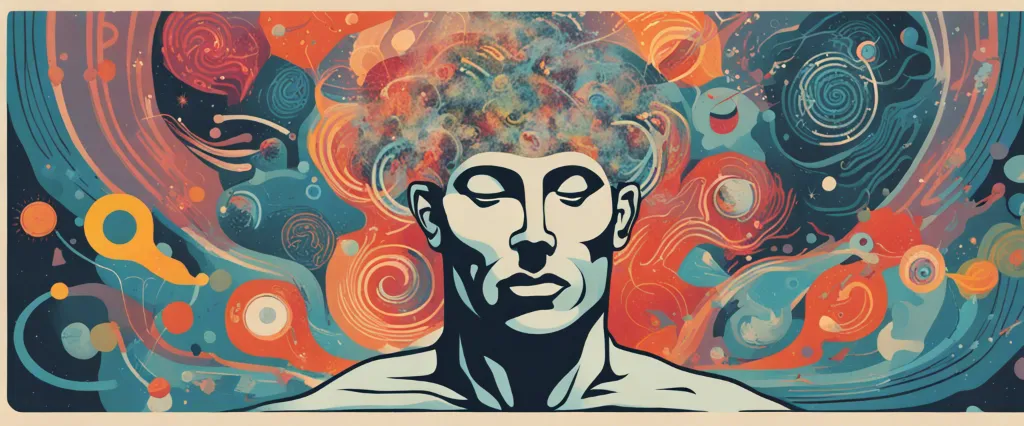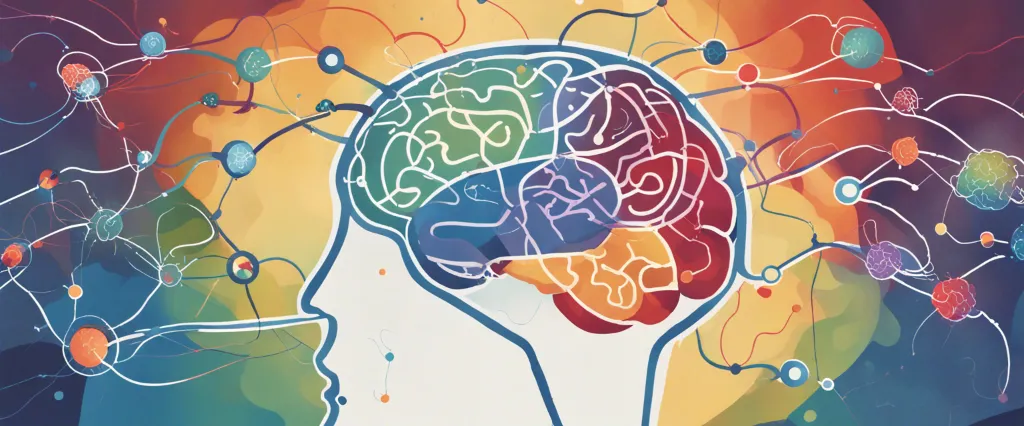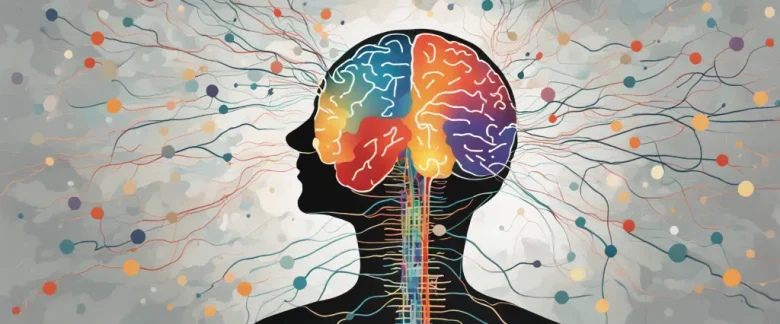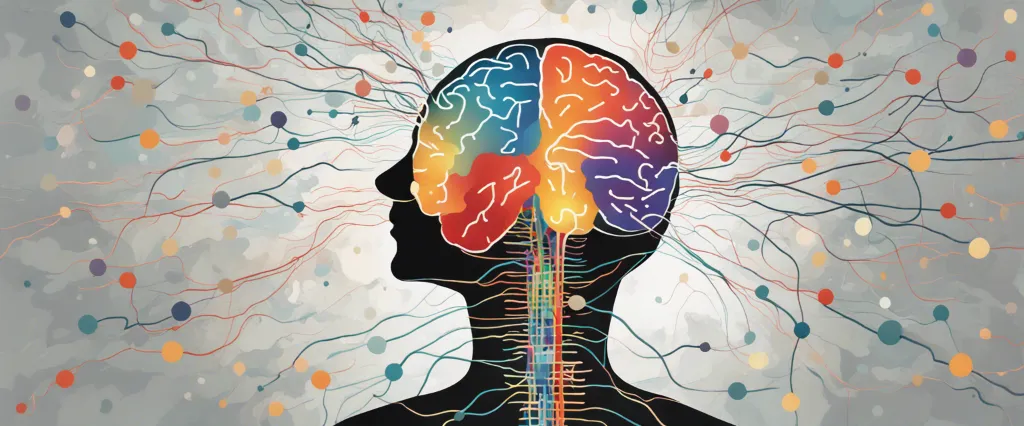In “Consciousness and the Brain,” Stanislas Dehaene takes readers on an enthralling journey to explore one of science’s most profound and elusive mysteries—the nature of consciousness. As a renowned cognitive neuroscientist, Dehaene skillfully combines his expert knowledge with lucid explanations, unveiling the intricate workings of the human brain and shedding light on the enigma of consciousness. Through an array of captivating experiments and fascinating insights, Dehaene delves into the depths of our consciousness, unraveling the secrets that have perplexed scientists and philosophers for centuries. With his groundbreaking research and innovative theories, Dehaene invites readers to embark on a profound exploration of the human mind, leading us closer than ever to understanding the essential questions of our existence.
Chapter 1: The Enigma of Consciousness
Chapter 1: The Enigma of Consciousness from the book “Consciousness and the Brain” by Stanislas Dehaene explores the central question of what consciousness is and how it arises in the human brain.
The chapter begins by engaging with the subjective nature of consciousness: the raw, immediate, and personal experience that defines our individual awareness. Dehaene argues that although consciousness is often seen as a quintessentially human concept, it can also be observed in other species to varying degrees. This prompts the author to delve into a scientific exploration of consciousness, seeking to determine its characteristics and understand its underlying neural processes.
Dehaene proposes that consciousness is linked to the ability of our brain to process information. Drawing on his research, he suggests that consciousness arises from a specific subset of brain activity that is responsible for the representation and integration of information. This idea is supported by neuroscience studies that show correlations between different patterns of brain activity and conscious experience.
Furthermore, the author highlights the importance of attention in shaping conscious experiences. Attention acts as a filter, allowing only certain information to enter our conscious awareness. Dehaene’s research reveals how the brain selects information based on its relevance and importance, forming the basis for our subjective experience.
Within this discussion, the chapter also touches upon theories of global workspace and the role of brain regions, such as the prefrontal cortex, in orchestrating conscious processing.
In conclusion, Chapter 1 provides an overview of the enigma of consciousness, exploring its subjective nature, neural basis, and its relation to attention and information processing in the brain. Dehaene introduces key concepts that form the foundation of the subsequent chapters, setting the stage for a comprehensive exploration of the mysteries surrounding consciousness and its implications.
Chapter 2: The Construction of the Brain
Chapter 2 of “Consciousness and the Brain” by Stanislas Dehaene, titled “The Construction of the Brain,” explores the intricate process through which the brain is formed and how consciousness arises from it. Dehaene emphasizes that understanding the construction of the brain is crucial in comprehending consciousness.
The chapter begins with an overview of the nervous system’s development from a single cell to a complex network of neurons. Dehaene explains how cells differentiate into specific types, such as neurons and glial cells, with neurons forming the building blocks of the brain. The intricate connections between neurons, known as synapses, are crucial for transmitting and processing information.
Dehaene then introduces the concept of neural networks, describing how they are shaped by both genetic instructions and experiences. He highlights that brain development is not completely predetermined by genetics but is heavily influenced by environmental factors, such as sensory inputs and social interactions.
The author delves into the crucial role of plasticity in brain development, which allows for learning and adaptation. He describes how the brain’s plasticity gradually decreases with age, leading to the specialization of cognitive functions in different regions of the brain.
Dehaene proposes that the neural mechanisms responsible for consciousness emerge from the dynamic interactions occurring within and between various brain regions. He suggests that consciousness is not localized to any specific area but rather involves distributed networks that integrate information from multiple sources.
In summary, Chapter 2 dives into the formation and construction of the brain, emphasizing its plasticity and how it develops through genetic instructions, experiences, and interactions with the environment. Dehaene establishes a foundation for understanding the neural processes underlying consciousness, setting the stage for further exploration in subsequent chapters.
Chapter 3: The Contents of Consciousness
Chapter 3 of “Consciousness and the Brain” by Stanislas Dehaene is titled “The Contents of Consciousness.” In this chapter, Dehaene explores how our conscious awareness is made up of various contents and delves into the question of what exactly constitutes the information that we are conscious of.
Dehaene argues that consciousness is not a singular entity but a bundle of different contents that can vary in quality and complexity. He presents research evidence suggesting that these conscious contents can be categorized into two main types: sensory contents and cognitive contents.
Sensory contents refer to the immediate perceptions we experience through our senses, such as sight, sound, and touch. These contents are thought to be relatively primitive and directly linked to our sensory organs. Dehaene suggests that our sensory awareness is based on neural representations that are initially unconscious, but become conscious through a process of amplification and integration into a global workspace.
On the other hand, cognitive contents are higher-level thoughts and mental representations that are not directly tied to sensory input. They involve processes such as abstract reasoning, problem-solving, and language comprehension. Dehaene proposes that these cognitive contents are constructed through a complex interplay of different brain regions and are heavily influenced by our prior knowledge and experience.
Overall, the chapter emphasizes that consciousness is not a homogenous entity, but a collection of various contents that can be further categorized and studied. Dehaene’s exploration of the different types of conscious contents lays the groundwork for further understanding the rich and multifaceted nature of our conscious experience.
Chapter 4: The Origins of Consciousness

In Chapter 4 of “Consciousness and the Brain” by Stanislas Dehaene, titled “The Origins of Consciousness,” the author delves into the evolution and development of consciousness in humans.
Dehaene starts by addressing the notion that consciousness is not unique to humans but is also present in other animals, although possibly in different forms. He emphasizes that consciousness did not suddenly arise with the emergence of Homo sapiens but has evolved through millions of years of natural selection.
The author explores how consciousness emerged from basic adaptive mechanisms found in the nervous systems of simpler organisms. He discusses the importance of sensory processing and the development of specialized brain regions dedicated to particular tasks, such as vision and language. These dedicated areas allow for more efficient processing of sensory information.
Dehaene introduces the concept of “global neuronal workspace” (GNW), which refers to a brain network composed of long-distance connections that integrate information from different specialized regions and make it available for multiple purposes, including conscious access. This GNW is considered a central mechanism for generating consciousness.
The chapter further delves into the idea that consciousness may have gradually evolved and expanded through the development of increasingly complex cognitive functions, such as working memory, planning, and introspection. These cognitive functions enabled the human brain to not only process and react to sensory information but also to manipulate representations of the world internally and engage in problem-solving.
Dehaene concludes the chapter by stressing that consciousness is not a binary state but exists along a continuum, with humans displaying a higher level of self-awareness and metacognition compared to other animals. Overall, this chapter unveils the evolution of consciousness from basic sensory processing to complex cognitive abilities, shedding light on the origins of our subjective awareness.
Chapter 5: Sleep and Consciousness
Chapter 5 of “Consciousness and the Brain” by Stanislas Dehaene focuses on the relationship between sleep and consciousness. Dehaene explores the role of sleep in restoring and maintaining cognitive functions, as well as its impact on memory consolidation and creativity.
The chapter begins by highlighting the distinction between two main stages of sleep: non-rapid eye movement (NREM) sleep and rapid eye movement (REM) sleep. During NREM sleep, the brain performs vital maintenance tasks, such as repairing damaged connections and clearing neurotoxic waste products. Dehaene suggests that these processes are crucial for optimizing brain function and enhancing conscious awareness when awake.
Furthermore, Dehaene unveils the strong link between sleep and memory consolidation. During sleep, the brain selectively enhances the memories that are deemed important, discarding irrelevant information. This process, known as memory replay, helps solidify newly acquired knowledge and improves cognitive performance. Dehaene argues that sleep is essential for integrating new experiences and facilitating learning, reinforcing the idea that consciousness relies on a well-rested brain.
Additionally, the chapter delves into the relationship between sleep and creativity. Dehaene suggests that the dreams experienced during REM sleep might play a role in generating new ideas, as the dreaming brain engages in unconstrained associative thinking. This creative process can often lead to innovative solutions and insights.
In conclusion, Chapter 5 emphasizes the significance of sleep in maintaining and enhancing consciousness. Sleep allows for vital repairs and memory consolidation, while also fostering creativity. Dehaene highlights sleep as a fundamental process that intertwines with consciousness, ultimately influencing our cognition and perception.
Chapter 6: Consciousness and Self
Chapter 6 of “Consciousness and the Brain” by Stanislas Dehaene explores the complex relationship between consciousness and the self. Dehaene delves into the question of whether consciousness and self-awareness go hand in hand or if they are separate entities.
The chapter begins by examining the phenomenon of self-consciousness and introspection, the ability to reflect on our own mental states. Dehaene argues that these higher cognitive functions arise from the fundamental mechanisms of consciousness, primarily based on hierarchically organized representations in the brain. Self-referential thoughts emerge when our mental representations are directed towards ourselves, leading to a sense of selfhood.
Dehaene identifies several brain regions that are involved in self-related processing, including the prefrontal cortex and the posterior cingulate cortex. He discusses experiments that provide evidence for the neural basis of self-consciousness, such as self-referential tasks and the study of patients with brain injuries affecting self-awareness.
Additionally, the chapter explores the connection between consciousness and narratives. Dehaene proposes that our capacity to construct narratives, to create a coherent story of our lives and personal experiences, is closely intertwined with self-awareness. He suggests that this ability might be rooted in brain structures that allow us to link past memories with a sense of identity.
Furthermore, Dehaene tackles the question of whether animals possess a sense of self. He examines studies on primates and dolphins that demonstrate self-recognition and discusses the evolutionary origins of self-consciousness.
In summary, Chapter 6 examines the relationship between consciousness and the self, proposing that self-awareness emerges from the underlying mechanisms of consciousness. Dehaene presents evidence from brain imaging studies, brain injuries, and evolutionary research to support his arguments. Overall, this chapter provides insights into how consciousness and selfhood are intertwined and how they shape our understanding of the world and ourselves.
Chapter 7: Varieties of Consciousness
Chapter 7 of “Consciousness and the Brain” by Stanislas Dehaene explores the different varieties of consciousness that humans experience. Dehaene emphasizes that consciousness is not a singular, uniform state but rather a multifaceted phenomenon. The chapter sheds light on various paradigms and brain states that highlight the diverse dimensions of consciousness.
Dehaene introduces two distinct types of consciousness: the perception-consciousness and the attention-consciousness. Perception-consciousness refers to our awareness of the external world, including our sensory perceptions. Attention-consciousness, on the other hand, involves our ability to selectively focus on specific stimuli or mental processes while excluding others.
Further, the author discusses the concept of meta-consciousness, which is our ability to reflect on our own conscious experiences. This form of consciousness enables us to introspect, analyze our thoughts, and report them to others.
Dehaene also delves into altered states of consciousness, such as sleep and anesthesia. During sleep, our perception-consciousness is largely diminished, but attention-consciousness remains to some extent. In anesthesia, both forms of consciousness are temporarily suppressed.
The chapter also explores higher-order consciousness, which is the ability to have conscious thoughts about our own conscious thoughts. This introspective layer introduces recursive loops and allows us to reason, plan, and develop self-awareness.
Moreover, Dehaene examines unconscious mental processes and their influence on conscious experiences. He introduces the concept of blindsight, in which individuals with visual deficits can still respond to specific stimuli despite being unaware of their presence.
In summary, Chapter 7 of “Consciousness and the Brain” highlights the complexity of consciousness by discussing perception-consciousness, attention-consciousness, meta-consciousness, altered states of consciousness, higher-order consciousness, and the role of unconscious processes.

Chapter 8: The Future of Consciousness
Chapter 8: The Future of Consciousness, in the book Consciousness and the Brain by Stanislas Dehaene, delves into the potential directions and advancements of our understanding of consciousness and its future implications. In this chapter, Dehaene explores several key themes, including the ambitious goal of mapping consciousness, the challenging nature of studying consciousness scientifically, and the ethical considerations surrounding the manipulation of consciousness.
Dehaene highlights the enormous challenge of mapping consciousness, expressing the need for a multi-disciplinary approach combining neuroscience, psychology, and philosophy. He emphasizes the importance of developing precise experimental tools and methodologies to study consciousness objectively.
The author discusses emerging technologies, such as brain imaging techniques, that hold promise in deciphering the mechanisms underlying conscious experiences. Dehaene also introduces the idea of using advanced computational models to simulate consciousness, shedding light on its workings and potentially providing new insights.
Ethics play a significant role in the future of consciousness, as Dehaene examines the risks associated with the manipulation of conscious experiences. He raises ethical concerns about technologies that could potentially invade privacy, manipulate emotions, or alter personal identities. These concerns prompt the need for responsible use and regulation of emerging consciousness-altering technologies.
In addition, Dehaene touches upon the intriguing notion of artificial consciousness and the potential development of conscious machines. While it remains uncertain whether machines can truly possess consciousness, the exploration of artificial intelligence and its relation to human consciousness holds remarkable promise for understanding the human mind.
Ultimately, Chapter 8 serves as a call for continued scientific exploration and collaboration in the field of consciousness. Dehaene emphasizes the need for interdisciplinary efforts, ethical considerations, and responsible advancements to unlock the mysteries of consciousness and harness its potential for the betterment of human well-being.
After Reading
In conclusion, “Consciousness and the Brain” by Stanislas Dehaene provides a profound exploration of the nature of consciousness and its relationship with the brain. Dehaene skillfully combines scientific research, philosophical insights, and personal experiences to present a comprehensive understanding of this complex phenomenon. He delves into the intricate workings of the brain, shedding light on how neural processes give rise to conscious awareness. Furthermore, Dehaene challenges traditional beliefs about consciousness and offers an alternative viewpoint, emphasizing the importance of unconscious cognitive processes. Through his thought-provoking arguments and evidence-based approach, Dehaene invites readers to critically evaluate their understanding of consciousness and appreciate the limitless potential of studying the brain. Undoubtedly, this compelling book revolutionizes our understanding of consciousness by bridging the gap between science and philosophy.
1. “The Tell-Tale Brain: A Neuroscientist’s Quest for What Makes Us Human” by V.S. Ramachandran – This book delves into the intricate connections between our brain and consciousness, exploring fascinating case studies and experiments that shed light on the mysteries of human perception and behavior.
2. Incognito: The Secret Lives of the Brain” by David Eagleman – Eagleman takes readers on a captivating journey through the depths of our unconscious mind, unraveling the enigmatic workings of the brain and its impact on our perception, decision-making, and identity.
3. The Brain that Changes Itself: Stories of Personal Triumph from the Frontiers of Brain Science” by Norman Doidge – This mind-opening book unveils the incredible potential of neuroplasticity, examining stories of individuals who have overcome neurological limitations and reshaped their brains, offering hope and inspiration for all.
4. “Phantoms in the Brain: Probing the Mysteries of the Human Mind” by V.S. Ramachandran and Sandra Blakeslee – Join Ramachandran on a captivating journey as he recounts various intriguing case studies, exploring the fascinating connections between brain, mind, and body, and uncovering the secrets behind seemingly inexplicable neurological disorders.
5. “The Conscious Brain: How Attention Engenders Experience” by Jesse J. Prinz – In this thought-provoking read, Prinz explores the relationship between attention and consciousness, shedding light on the mechanisms that give rise to our subjective experiences, challenging traditional philosophical and scientific views on the nature of consciousness.




